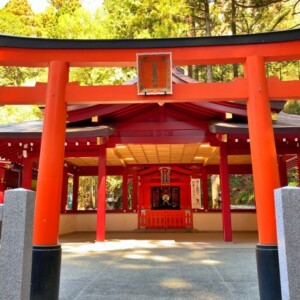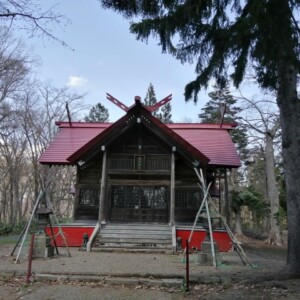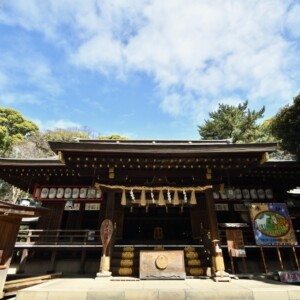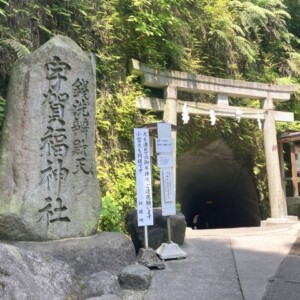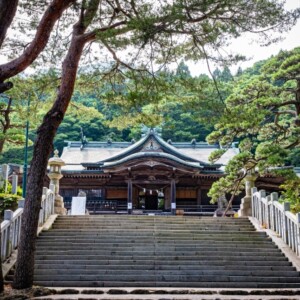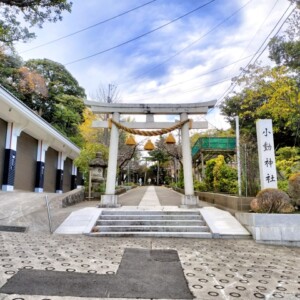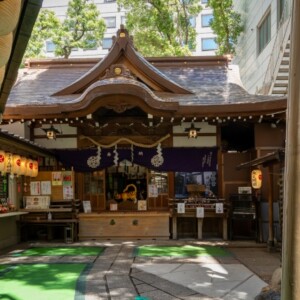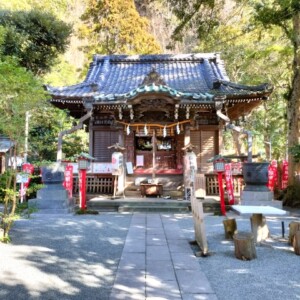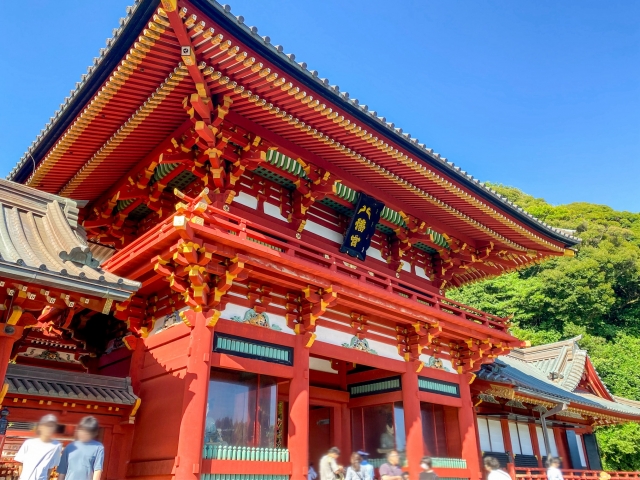
Tsurugaoka Hachimangu Shrine|A complete guide to the history, highlights, and worship information of this historic Kamakura guardian shrine
Tsurugaoka Hachimangu Shrine, located in Kamakura City, Kanagawa Prefecture, is a historic shrine associated with Prince Minamoto no Yoritomo, and is a symbol of Kamakura that attracts many visitors from all over Japan. The shrine is well known as the god of military fortune, and is also known for various benefits such as improved luck in victory and prayers for easy childbirth. The beautiful shrine pavilions, designated as National Important Cultural Properties, and many other historical attractions are scattered throughout the precincts of the shrine, allowing visitors to fully experience the charms of the ancient capital of Kamakura.
Outline and Basic Information on Tsurugaoka Hachimangu Shrine
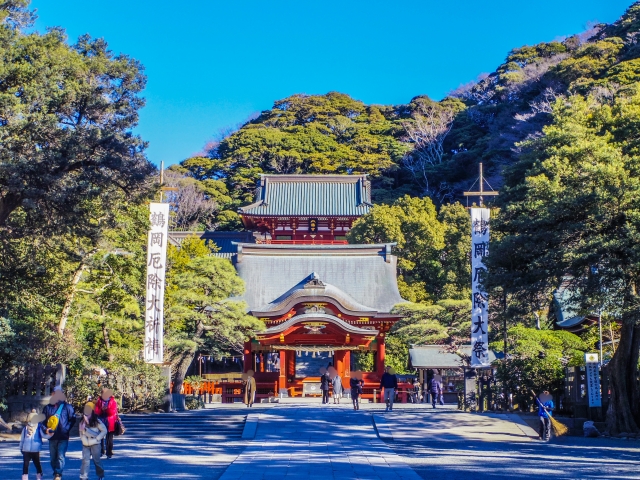
Tsurugaoka Hachimangu Shrine is located in Yukinoshita, Kamakura, Kanagawa Prefecture, and was founded in the late 11th century as a guardian deity of the Minamoto clan. Today, the shrine is highly known in the Kanto area as a shrine associated with Minamoto no Yoritomo, the first shogun of the Kamakura Shogunate, and its precincts have been designated as a national historic site. It is also a member of the National Ichinomiya Association and is sometimes regarded as the first shrine in Sagami Province.
History and Origin
The history of Tsurugaoka Hachimangu Shrine dates back to 1063, when Minamoto no Yoriyoshi was so pleased with the defeat of Taira no Tadatsune that he secretly invited a spirit from Ishimizu Hachimangu Shrine in Kyoto and enshrined it around Yubigahama (the current location of Yubiwakangu Shrine).
In 1191, a fire broke out at the shrine, but Yoritomo made an incision in the hillside behind the shrine, and the shrine was renamed Ishimizu Hachiman-no-miya, Yoritomo then cut down the hillside behind the shrine, and a branch of Ishimizu Hachiman-gu Shrine was invoked to rebuild Tsurugaoka Hachiman-gu Shrine in a new style, giving it its present appearance as both the upper and lower shrines.
Tsurugaoka Hachiman-gu Shrine was the spiritual center of unity for the samurai of Kamakura, and important policies of the shogunate were implemented there by questioning the will of the gods. The shrine continued to be revered by the samurai government throughout the ages, and in the Edo period (1603-1867), Tokugawa Ieyasu devoted himself to its restoration and protection.
Gods and Benefits
Tsurugaoka Hachiman-gu Shrine’s three deities are Emperor Ojin (the 15th Emperor), Hime (the three Munakata Goddesses), and Empress Jingu (Empress of the 14th Emperor Nakai), collectively known as the “Hachiman Gods.
The gods are known as “Hachiman deities” and are collectively called “Hachiman deities.” Their benefits include improved luck in winning, success in life, easy childbirth, family safety, traffic safety, and academic achievement. Hachiman is especially believed to be a god of military fortune, and has been worshipped by the warrior class, and is therefore believed to be highly beneficial for prayers for victory and victory. It is also believed to be beneficial for safe delivery and child-rearing, as Empress Jingu went on a war expedition when she was pregnant and gave birth safely afterwards.
Tsuruoka Hachimangu Shrine Highlights and Features
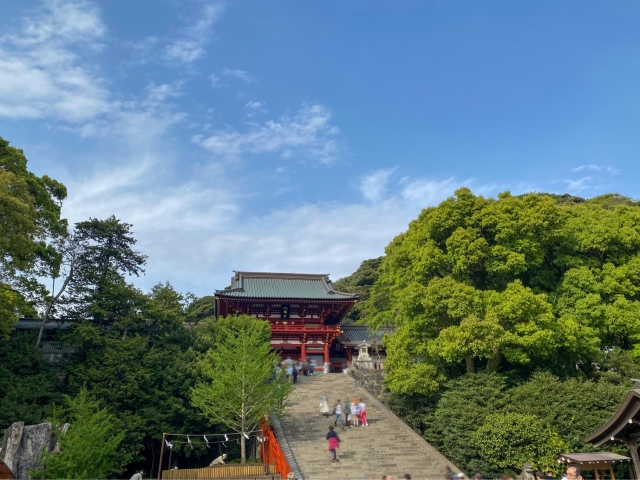
The precincts of Tsurugaoka Hachimangu Shrine are dotted with numerous historical and cultural attractions that continue to attract visitors. From the beautiful architecture to the rich natural gardens, visitors can fully enjoy the charms of the ancient capital of Kamakura.
Beautiful architecture of the main shrine (Jingu) and Wakamiya (Shimomiya)
Tsurugaoka Hachiman-gu Shrine has two main shrines: the Honmiya (Jogu) located halfway up Mt. The present main shrine was rebuilt in 1828 by Ienari Tokugawa, the 11th Shogun of the Edo Shogunate, and is designated as a National Important Cultural Property along with the regent Wakamiya Shrine.
The Maiten (lower hall of worship) stands on the site of a corridor where Shizuka Gozen, Minamoto no Yoshitsune’s beloved mistress, is said to have performed a dance in memory of Yoshitsune. On the other side of the dance hall, there are 61 large stone steps from which, depending on the weather, one can see as far as the Pacific Ocean and Izu Oshima Island beyond.
Both Tsurugaoka Hachiman-gu shrines are built in the Nagare-gongen-zukuri style, and the vermilion-lacquered, highly colored decorations are extremely beautiful against the mountain greenery. The gate has a flat plaque in the shape of a dove, a messenger of Hachiman-sama, and if you look closely, you can see that the character for “8” is in the shape of a dove.
Charming Genpei-ike Pond and the rich natural surroundings of the temple grounds
Genpei-ike Ponds are two large ponds located near the entrance to the grounds of Tsurugaoka Hachiman-gu Shrine. The Genji Pond has three islands, symbolizing “birth” and wishing for the prosperity of the Genji clan, while the Heike Pond has four islands, symbolizing “death” and wishing for the destruction of the Heike clan.
Before climbing the large stone staircase, the stump on the left toward the large stone staircase is worth noting. This stump, called “Oyaginko,” is a remnant of the large ginkgo tree that was once the sacred tree of Tsurugaoka Hachiman Shrine. This precious tree was once designated as a natural monument by Kanagawa Prefecture and was said to be 1,000 years old. Unfortunately, the large ginkgo tree fell due to strong winds in March 2010, but the remaining trunk was transplanted right next to the original tree as the parent ginkgo tree, and the hikoboe that grew from the root section is being nurtured as the “child ginkgo tree.
Cultural Properties and Important Collections
Tsurugaoka Hachimangu Shrine houses three tachi swords (each by Tsunahiro Soshu, Tsunagae, and Yasukuni), three paulownia phoenix maki-e maki-e string-maki tachi sword molds, and other national treasures and important cultural properties, most of which are deposited in the Kamakura National Treasure Museum, except the structures.
There are a total of eight regent shrines and seven of them are located within the precincts of the shrine. Of particular note is Shirahata Shrine, which enshrines Minamoto no Yoritomo and Minamoto no Sanetomo and bears the family crest of the Minamoto clan, the Sasa Ryuyo. Maruyama Inari Shrine, the oldest Muromachi period building at Tsurugaoka Hachimangu Shrine, is surrounded by red flags dedicated by those who pray for business prosperity, and the main shrine is designated as an important cultural property.
Guide to Prayer and Worship
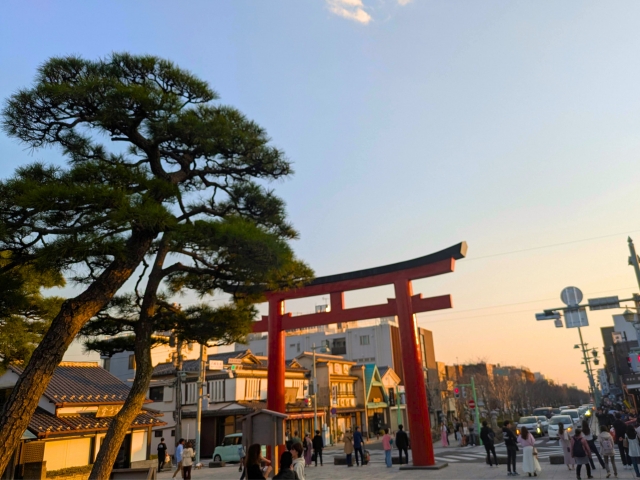
Following the ancient rituals of Tsurugaoka Hachiman-gu Shrine provides a deeper spiritual experience, from the traditional rituals that have been handed down for more than 800 years to the modern-day awards that are available to meet the various wishes of the visitors.
Worship Etiquette and Manners
Worship at Tsurugaoka Hachimangu Shrine is conducted in accordance with general shrine etiquette. First, purify your body and mind at the Tezumisha, and avoid walking down the center of the approach to the shrine. The first thing to do is to bow in the manner of Nirei Ni-Beat-Ippou, and pray silently in your heart for your wish.
The temple is open from 6:00 to 20:00. The shrine’s prayer hall is open from 8:30 to 17:00, and the prayer and red seal office is open from 8:30 to 16:30. There is no admission fee to the shrine, but a 200 yen fee is required to visit the treasure hall. The temple grounds are barrier-free, with free wheelchair rental, multipurpose restrooms, nursing rooms, and diaper-changing sheets available. Please note that pets (dogs, cats, etc.) are not allowed.
The best time to visit the shrine is early in the morning. Many visitors enjoy the dignified morning air and the refreshing feeling it provides.
Annual & Seasonal Events
Tsurugaoka Hachiman-gu Shrine holds many festivals throughout the year, and traditional festivals that have been passed down for over 800 years are held here. The most famous is the annual festival held in September, which falls on September 15.
The most notable event is the Yabusame (horseback archery) ritual, a traditional event started by Minamoto no Yoritomo for the training of warriors in the Kamakura period (1185-1333). The heroic ritual of shooting targets while galloping on horseback is still performed today and attracts many spectators.
The shrine is also a place of seasonal beauty, with cherry blossoms in spring and autumn leaves in fall, and especially on the spring and autumnal equinoxes, an annual festival is held at the Soreisha Shrine to remember the ancestral spirits of the Ujiko worshippers and the heroic spirits of national defense. During Hatsumode (New Year’s Eve and New Year’s Eve), the shrine is open 24 hours a day and attracts one of the largest crowds in Japan.
Goshuin (red seal) and good-luck charm information
There are two types of red seals available at Tsurugaoka Hachimangu Shrine: one for Tsurugaoka Hachimangu Shrine and the other for Hatagami Benzaiten Shrine, which is located within the shrine’s precincts. There are two types of red seals: one at Tsurugaoka Hachimangu Shrine and the other at Hatakami Benzaiten Shrine, both located on the grounds of the shrine. The initial fee is 500 yen each, and original red seal impression books are also available.
Popular amulets include a crane-shaped amulet with Hachiman-sama’s ochikara folded into it, named after Tsurugaoka Hachiman Shrine, and an amulet containing a branch from the Oyaginko tree, which is believed to contain the power of regeneration and life force. There is also a cute and charming amulet with a motif of a dove, which has been revered as a messenger of the Hachiman God, available in gold, silver, and white.
The amulet with an illustration of horseback archery on it means “to shoot through the center of your wish just as you would hit a target on horseback archery,” and is said to bring good luck in finding a job or improving one’s luck at work. Visitors can also draw omikuji on the temple grounds. Several types of omikuji are available, including dove omikuji, omikuji with a lucky charm for good luck and good fortune, and enmusubi omikuji.
Access and use information
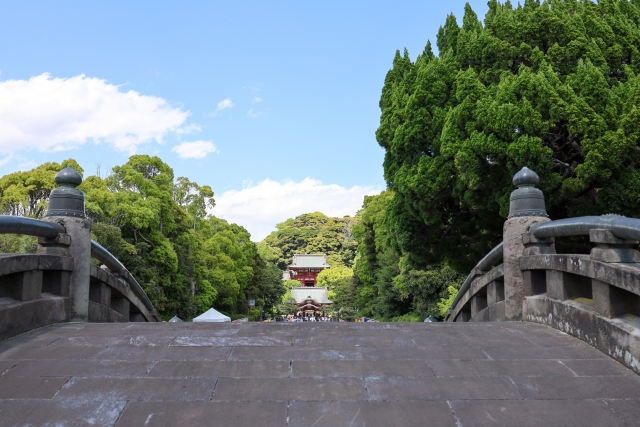
Tsurugaoka Hachimangu Shrine is located in the center of Kamakura and is easily accessible by train or car. There are many sightseeing spots nearby, such as Komachi-dori Street, making it an ideal starting point for sightseeing in Kamakura.
Transportation Access
The nearest station is a 10-minute walk from the East Exit of JR Kamakura Station on the JR Yokosuka Line and JR Shonan Shinjuku Line, and a 10-minute walk from Enoden Kamakura Station on the Enoshima Electric Railway. There are also bus routes from Kamakura, Hongodai, Ofuna, and Kamiooka Stations, and you can get off at Hachimangu Shrine or Kamakura Hachimangu Shrine-mae, or at the bus stop behind Hachimangu Shrine.
If coming by car, from the Asahina IC of the Yokohama-Yokosuka Road (Asahi Yokosuka Road), take Prefectural Route 204 in the direction of Kamakura for approximately 5 km.
Wakamiya-oji Avenue, the approach to Tsurugaoka Hachimangu Shrine, runs roughly north-south through the center of Kamakura from Yuigahama to Hachimangu Shrine, and was built by Minamoto no Yoritomo with his own participation, modeled after Suzaku-oji Avenue in Kyoto. From the second torii (second gateway), there is a walkway called “dan-kuzu,” which is a step higher than the roadway, and if you have time, it is recommended to walk from the first torii at Yuhigahama. The distance from Yuhigahama to Tsurugaoka Hachimangu Shrine is about 2 km.
Hours of Admission, Fees, and Parking Information
The shrine is open from 6:00 am to 8:30 pm all year round, so you can visit from early in the morning until late at night. Admission is free, but a 200 yen fee is required to visit the Treasure Hall. The gates are open year-round, and during Hatsumode (New Year’s Eve and New Year’s Eve), the temple is open 24 hours a day.
For parking, a dedicated parking lot (40 spaces for standard-sized vehicles for a fee) is available on the temple grounds. Reservations can be made through the website for large buses only, and reservations can be made for the current month and up to three months in advance. If the dedicated parking lot is full, there are several hourly parking lots in the vicinity, such as Times.
The busiest times of the year are Hatsumode (New Year’s first visit to the shrine), spring cherry blossom season, fall foliage season, and Golden Week. These periods are especially crowded with visitors, so we recommend that you allow plenty of time for your visit. It is recommended to allow 1-2 hours for a full tour of the temple grounds.
<Address> 2-1-31 Yukinoshita, Kamakura-shi, Kanagawa-ken 248-8588
Reference site
Tsurugaoka Hachimangu Shrine Official Website: https://www.hachimangu.or.jp/



